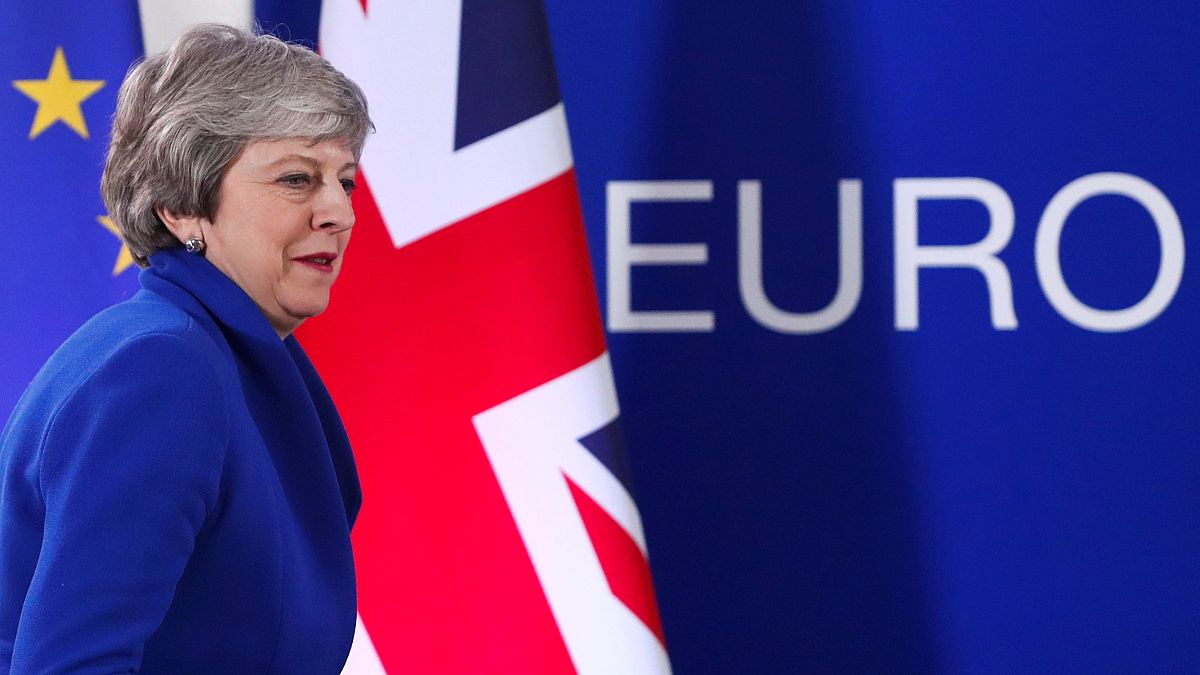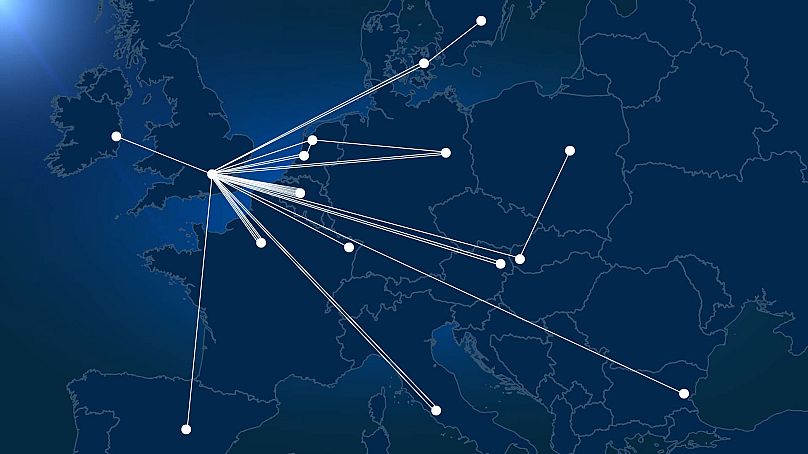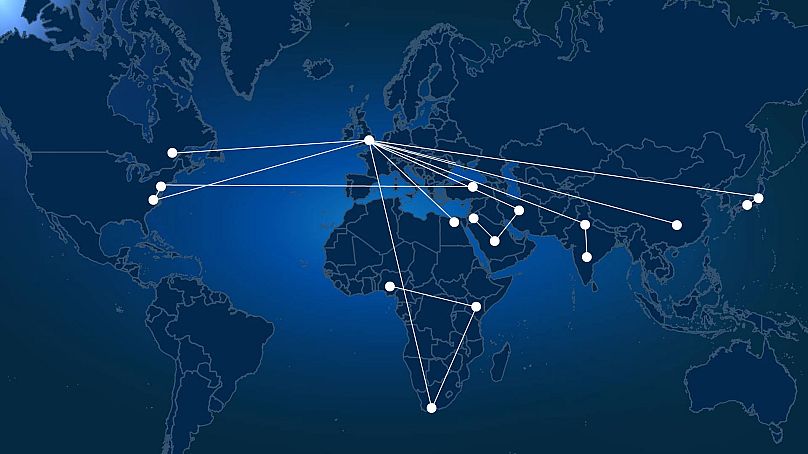Theresa May's numerous Brexit related trips over the years have had the same environmental impact as 126 UK residents or 2,642 Kenyans over the same period of time.
For the past three years, British PM Theresa May has travelled all over the world, to Brussels, Paris, Canada, Japan and many more, to hold talks with European leaders on the terms for a withdrawal, and various world leaders on post-Brexit trade agreements.
That's a lot of meetings, and a lot of travel.
Euronews has investigated the extent of Theresa May's carbon footprint over the course of the her three busy years in government.
Since 2016, she has completed around 50 Brexit related trips, with nearly 40 in Europe.
Below, you can see the extent of her trips within Europe.
Theresa May has travelled for Brexit-related reasons exactly 39 times around the EU, mostly to Brussels to attend Brexit talks, but also to countries like France, Germany, Italy, Sweden and Poland to meet with state representatives.
The PM's plane, an Airbus A330, burns about 5.2 tonnes of fuel an hour, with each tonne of fuel emitting 3.15 tonnes of CO2.
Those trips amount to a rough average of fifty hours of travelling, which means her travels have resulted in emissions of around 819 tonnes of CO2 since 2016.
The average UK resident's CO2 emissions produce about 6.5 tonnes per year. Her trips would therefore be equal to 42 UK citizens' CO2 emissions. UK citizens are also by no means low on their individual emissions, so we looked at a country where citizens on average have a much smaller CO2 output: Kenya. According to figures from a World Bank report, May's trips would be equal to 881 Kenyan citizens in the same amount of time.
But that's not the end of the calculation. The PM has also travelled to places such as Japan and Canada to discuss post-Brexit trade agreements.
Therefore, if we add the number of hours Theresa May spent on the Airbus A330 travelling to other parts of the world, this amounts to around another 100 hours.
This would make her emissions as high as 2,500 tonnes of CO2 in three years, equal to 126 UK residents or 2,642 Kenyans.
Below is a representation of PM May's worldwide trips.
Private jets: how the wealthy add to climate change
Each of Theresa May's flights cost thousands of pounds, with some, like her trips to Cape Town, Nigeria and Kenya, costing more than 100,000 pounds in total.
Private jets are reserved for those who can afford it, and Andrew Murphy, an Aviation Manager at European NGO federation Transport and Environment, says there is an increase in the use of private jets, which can have a big impact on the environment.
"The more private jets, the greater the effect on the environment. There is an increase of private jets in recent years and there's a number of reasons for that: general global inequality, the wealthy become wealthier and buy more of these toys, for example."
"Flying private jets would have a greater environmental impact than flying commercially, purely because the climate impact of a flight is the amount of fuel burnt on a flight divided by the number of passengers. So private jets by nature have fewer passengers, and as a result, the emissions will be higher per passenger", he says.
Murphy explains that there are always unique circumstances as to why somebody has to use a private jet, but that everyone, including government officials, shouldn't fly unless it is necessary.
"Heads of governments might have a particular reason that might not apply to business leaders. But all things being equal, the good starting point for reducing aviation emissions is if you don’t have to fly, don’t fly. That can sometimes be the case for European leaders and business leaders. The most obvious example would be the Eurostar from London to Brussels. So Theresa May flies every time she comes over to Brussels for Brexit meetings when she could get the train."
Private jets exempt from environmental measures
What distinguishes Theresa May's flights with private jets for business leaders, is that the latter can sometimes be captured by some environmental measures, like the EU Emission Trading Scheme.
"Technically speaking, Theresa May, Angela Merkel and Donald Trump's planes aren’t private jets, they are military flights. So it folds under military emissions. And that's a bad thing, because they can be exempt from environmental measures", Murphy adds.
This is the case, for example, with EU ETF, the EU's emission trading system.
Other kinds of measures have also been criticised for not applying to private jets, such as "Corsia", a UN measure to monitor airlines CO2 emissions voted in 2016.
Corsia's requirements will only apply to planes with international emissions above 10,000 tonnes of CO2, which means most of the world's private jets are exempt.


